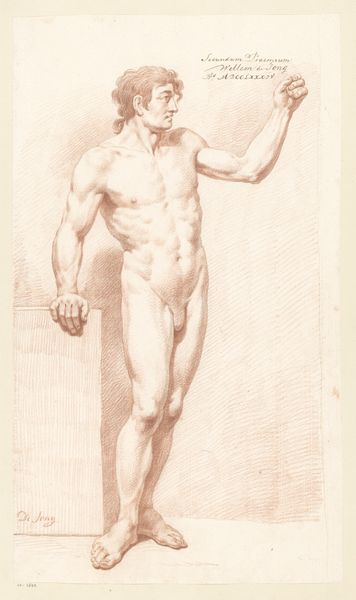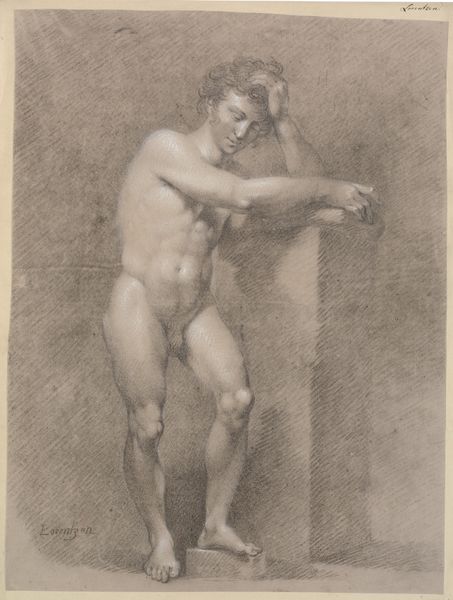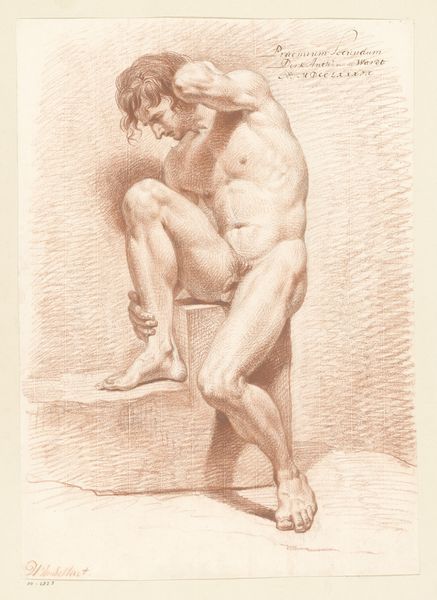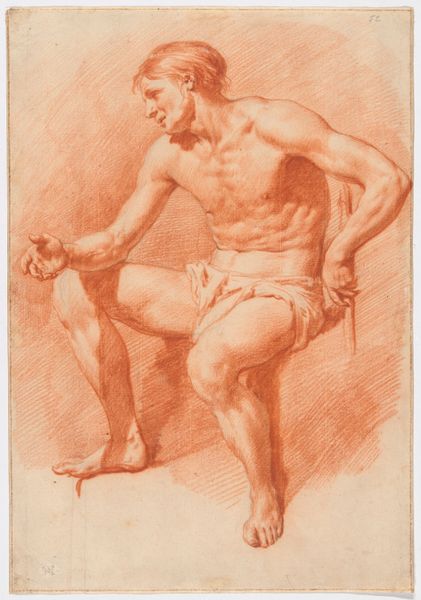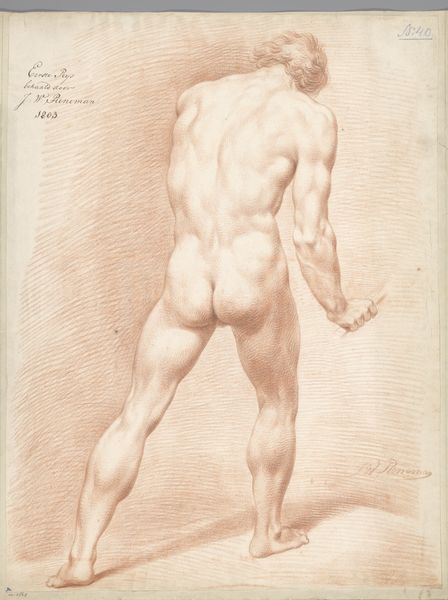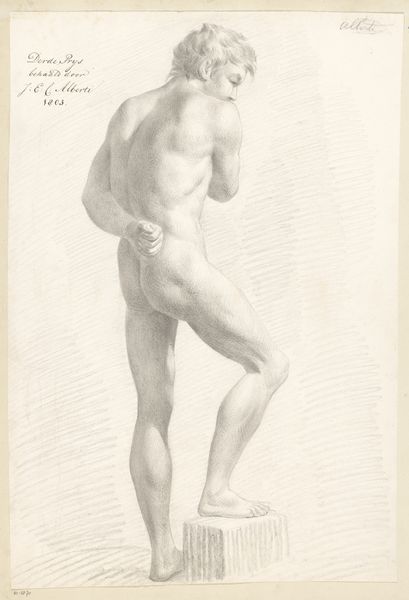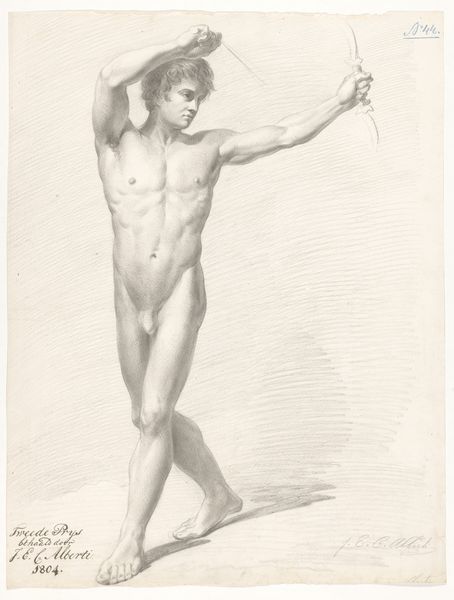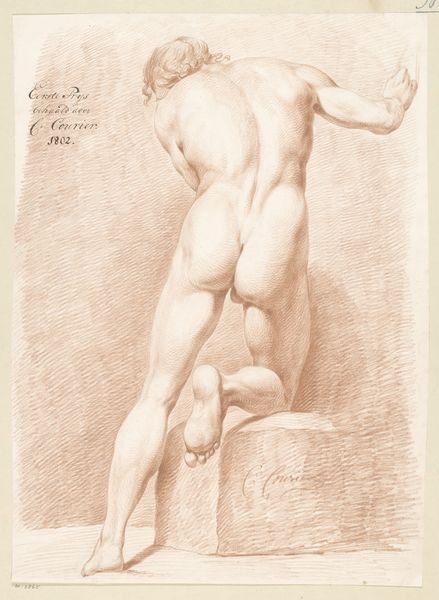
Staande naakte man met armen rond zijn hoofd gevouwen 1769 - 1790
0:00
0:00
drawing, print, etching, engraving
#
drawing
#
neoclacissism
#
medieval
# print
#
etching
#
classical-realism
#
figuration
#
form
#
line
#
history-painting
#
academic-art
#
nude
#
engraving
Dimensions: height 470 mm, width 330 mm
Copyright: Rijks Museum: Open Domain
Curator: This is "Standing Naked Man with Arms Folded Around His Head," an engraving by Louis Marin Bonnet dating from between 1769 and 1790. It’s currently held at the Rijksmuseum. Editor: The image projects a profound sense of inward suffering, or perhaps introspection, doesn't it? The subject’s posture conveys an almost unbearable weight. Curator: Observe how the artist masterfully employs line to define form. The subject's musculature, rendered in precise detail, exemplifies the Neoclassical obsession with idealised human anatomy. See how the hatching and cross-hatching create a tonal range despite the print’s limited palette? Editor: It's compelling to consider how the white, Western male body is represented. The positioning, with head in hands, carries the weight of history--a representation of torment that often gets placed onto figures outside the realm of "pure" and "noble" humanity, particularly through religious representation and myth. Curator: But isn't that to ignore the aesthetic achievement? Bonnet is playing with conventions of form and posture in Academic Art, channeling the canon for his audience. There’s also a raw, immediate quality because he is foregrounding classical-realism that suggests the figure isn't allegorical or mythological but is indeed present. Editor: To what extent can one ignore the socio-political context from which these standards of the “ideal” emerged? Whose bodies have historically been deemed worthy of such careful study, of idealisation? By obscuring his own gaze, is Bonnet acknowledging art’s failure to resolve the problems of the world? Curator: You bring a lot to unpack there, and while art certainly never resolves all human suffering, I appreciate Bonnet's emphasis on the pure, unadulterated essence of the human form. It allows me to feel a connection to something eternal and fundamentally human in its simplicity. Editor: Perhaps what resonates most with me is how the work compels us to question what gets valorised, and how we engage with visual art to dismantle those narratives rather than continue reproducing them.
Comments
No comments
Be the first to comment and join the conversation on the ultimate creative platform.
